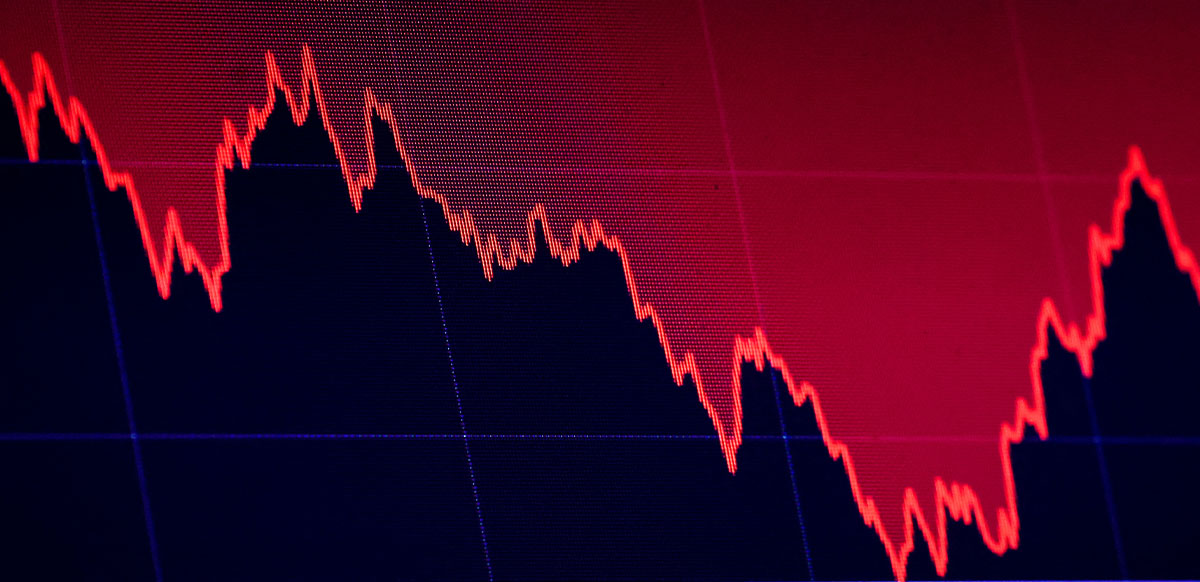Introduction
Credit trading is a financial practice that involves the buying and selling of various types of credit instruments, such as loans, bonds, and credit default swaps. It is an essential part of the global financial system and plays a crucial role in the functioning of the economy. Through credit trading, investors and financial institutions can manage credit risks, diversify their portfolios, and seek opportunities for profit.
With credit trading, the focus is on evaluating the creditworthiness of borrowers and assessing the risk associated with lending money or investing in specific credit instruments. This assessment takes into account factors such as the borrower’s financial health, credit history, and market conditions. By analyzing these factors, traders can determine the value of the credit instrument and make informed decisions about buying or selling.
Credit trading is vital for maintaining liquidity in the financial market. It allows lenders to mitigate their risk by transferring the credit exposure to other market participants who are willing to take on that risk. Additionally, it facilitates the allocation of capital to borrowers who may not have access to traditional lending sources. This, in turn, promotes economic growth and development.
The credit trading market is vast and dynamic, encompassing a wide range of participants, including banks, hedge funds, insurance companies, and institutional investors. It operates both over-the-counter (OTC), where transactions occur directly between two parties, and on exchanges, where standardized credit instruments are traded.
While credit trading presents opportunities for profit and risk management, it also carries inherent risks. Market volatility, credit defaults, and regulatory changes can impact the value of credit instruments and create uncertainty. Traders need to have a deep understanding of the market and employ effective risk mitigation strategies.
In this article, we will explore the world of credit trading in detail, examining its importance, mechanics, various types of credit instruments, common trading strategies, as well as the risks and benefits associated with this practice. By gaining insights into credit trading, you will be better equipped to navigate the complex landscape of finance and make informed investment decisions.
What is Credit Trading?
Credit trading refers to the buying and selling of credit instruments, which are financial assets that represent a borrower’s ability to pay back a debt. These instruments include bonds, loans, and credit default swaps (CDS). Credit trading is a fundamental component of the global financial system and plays a crucial role in facilitating capital allocation and managing credit risks.
Essentially, credit trading involves assessing the creditworthiness of borrowers and evaluating the risk associated with their debt obligations. This evaluation process considers various factors, such as the borrower’s financial stability, credit history, industry performance, and market conditions. Traders analyze this information to determine the value of the credit instrument and make informed decisions about buying or selling.
One of the main objectives of credit trading is to manage and balance the credit risk in portfolios. Lenders and investors use credit trading as a way to diversify their holdings and hedge against potential losses. By trading credit instruments, they can transfer or distribute the credit exposure to other market participants who are willing to take on the risk in exchange for potential returns.
Credit trading can be conducted through various channels. Over-the-counter (OTC) trading is one common approach, where buyers and sellers negotiate directly with each other to agree on the terms of the transaction. Alternatively, credit trading can take place on exchanges, where standardized credit instruments are traded in a more regulated and transparent environment.
The credit trading market is vast and involves a wide range of participants, including banks, hedge funds, insurance companies, and institutional investors. These market participants trade credit instruments for a variety of reasons, such as generating income, managing risks, or speculating on market movements.
Overall, credit trading plays a crucial role in the financial system by providing liquidity, allowing for risk mitigation, and promoting efficient capital allocation. It enables lenders to transfer credit risk, facilitates access to financing for borrowers, and supports economic growth. Understanding the mechanics and dynamics of credit trading is essential for investors and financial professionals looking to navigate the complexities of the global financial markets and make informed decisions.
Why is Credit Trading Important?
Credit trading plays a vital role in the functioning of the financial system and offers numerous benefits to market participants. Let’s explore why credit trading is important:
Liquidity and Market Efficiency: Credit trading enhances market liquidity by providing a platform for buyers and sellers to trade credit instruments. This liquidity ensures that there are always willing buyers and sellers in the market, making it easier for investors to enter or exit positions. Additionally, credit trading contributes to price discovery and efficient market functioning.
Risk Management: Credit trading allows lenders and investors to manage credit risks. By buying or selling credit instruments, market participants can diversify their portfolios, reduce exposure to specific borrowers or industries, and mitigate the risk of default. This risk management aspect is crucial in maintaining financial stability and protecting the interests of investors and lenders.
Capital Allocation: Credit trading facilitates the efficient allocation of capital to borrowers. It provides a mechanism for borrowers to access financing and capital from a wide range of sources, beyond traditional lenders such as banks. This promotes economic growth by enabling businesses to expand, invest, and innovate.
Opportunity for Profit: Credit trading offers investors the opportunity to generate income and profit. By identifying undervalued or overvalued credit instruments, traders can buy low and sell high, taking advantage of market inefficiencies. Additionally, credit trading opens up avenues for speculation and arbitrage, enabling traders to capitalize on price discrepancies and market movements.
Hedging and Risk Mitigation: Credit trading provides tools for hedging and risk management. For example, credit default swaps (CDS) allow investors to protect themselves against the risk of default by purchasing insurance against it. Through these instruments, market participants can reduce their exposure to credit events and potential losses.
Support for Economic Growth: Credit trading promotes economic growth by facilitating access to financing and capital for various businesses and projects. It allows entities with limited creditworthiness to obtain funding, encouraging entrepreneurship and innovation. Moreover, the availability of credit instruments and trading opportunities contributes to the overall health and stability of the financial system.
In summary, credit trading is essential for market liquidity, risk management, efficient capital allocation, profit opportunities, and supporting economic growth. It serves as a crucial mechanism for investors, lenders, and borrowers to navigate the complexities of the financial system and achieve their respective goals.
How Does Credit Trading Work?
Credit trading involves a complex process that revolves around the buying and selling of credit instruments. Let’s explore how credit trading works:
Assessing Creditworthiness: The first step in credit trading is evaluating the creditworthiness of borrowers. Traders examine factors such as financial statements, credit ratings, industry performance, and economic conditions to determine the level of risk associated with lending money to a particular borrower.
Valuation of Credit Instruments: Traders use various models and methodologies to value credit instruments. This valuation takes into account the current market conditions, credit spreads, interest rates, and the credit risk of the underlying borrower. By determining the fair value of the instrument, traders can make informed decisions about buying or selling.
Marketplace and Trading Platforms: Credit trading takes place through various channels. Over-the-counter (OTC) trading allows investors to negotiate directly with each other to agree on the terms of the transaction. Alternatively, credit instruments can be traded on exchanges, where standardized contracts are bought and sold in a more regulated environment.
Buying and Selling Credit Instruments: Once the creditworthiness and valuation of the instrument are assessed, traders can proceed with buying or selling credit instruments. Buyers submit purchase orders, and sellers offer their instruments for sale. Negotiations occur, and the terms of the transaction, such as price, quantity, and settlement date, are agreed upon.
Settlement and Clearing: After a transaction is finalized, settlement and clearing take place. This involves the transfer of ownership of the credit instrument and the exchange of funds between the buyer and seller. Settlement processes can vary depending on the type of credit instrument and the trading platform used.
Risk Management: Credit trading involves managing credit risk. Traders use various strategies to mitigate risk, such as diversifying their portfolios, using hedging instruments like credit default swaps (CDS), or implementing risk management techniques to limit exposure to specific borrowers or industries.
Market Monitoring and Analysis: Credit traders continuously monitor the market and analyze trends, news, and economic indicators that may impact the value of credit instruments. They stay informed about changes in credit ratings, market sentiment, and regulatory developments to make informed trading decisions.
Research and Due Diligence: Credit trading requires thorough research and due diligence. Traders analyze the fundamental and qualitative factors of borrowers, such as their financial health, management team, industry outlook, and credit history. This information helps in assessing creditworthiness and making informed investment decisions.
Post-Trade Reporting and Compliance: After a trade is executed, traders are required to comply with regulatory and reporting obligations. This includes providing accurate trade information, maintaining transaction records, and ensuring adherence to applicable regulations and guidelines.
In summary, credit trading involves assessing creditworthiness, valuing credit instruments, conducting transactions through various marketplaces, managing risks, and complying with regulations. To succeed in credit trading, investors and traders need strong analytical skills, market knowledge, and a deep understanding of credit risk.
Types of Credit Trading
Credit trading encompasses various types of credit instruments, each serving a unique purpose in the financial market. Let’s explore some of the most common types of credit trading:
Credit Default Swaps (CDS): Credit default swaps are derivatives that allow investors to protect themselves against the risk of default on a particular debt obligation. In a CDS, the buyer pays a premium to the seller in exchange for the seller agreeing to compensate the buyer if a credit event, such as a default or restructuring, occurs. CDS instruments provide a way to hedge or speculate on the creditworthiness of a specific borrower or entity.
Bond Trading: Bond trading involves buying and selling debt securities issued by governments, corporations, and other entities. Bonds represent the borrower’s promise to repay the principal amount plus interest over a specified period. Investors in bond trading aim to make a profit from price fluctuations and interest rate differentials. Bond trading can be done in the primary market (when new bonds are issued) or in the secondary market (when existing bonds are traded between investors).
Loan Trading: Loan trading refers to the buying and selling of loans. These loans can be originated by banks, financial institutions, or other lenders. Loan trading allows lenders to transfer the risk associated with the loan to another market participant. Loan trading can occur in the primary market, where loans are originated, or in the secondary market, where existing loans are traded.
Structured Credit Products: Structured credit products are complex credit instruments created by combining multiple credit assets into a single security. These products often consist of pools of loans, mortgages, or other debt obligations. Structured credit products offer investors exposure to a diversified portfolio of credit assets. Examples include collateralized debt obligations (CDOs) and asset-backed securities (ABS).
Securitization: Securitization involves packaging a pool of financial assets, such as loans or mortgages, into tradable securities. These securities, known as asset-backed securities (ABS), are then sold to investors. Securitization allows financial institutions to convert illiquid assets into tradable securities, increasing liquidity in the market and generating capital to fund new loans.
Debt Exchanges: Debt exchanges provide a platform for borrowers to renegotiate the terms of their existing debt obligations. These exchanges allow borrowers to improve their financial situation by restructuring debt, extending maturities, or adjusting interest rates. Debt exchanges can provide opportunities for investors to buy or sell debt securities at discounted prices.
Distressed Debt Trading: Distressed debt trading involves buying and selling the debt obligations of troubled companies or entities that are undergoing financial distress. Investors in distressed debt seek to profit from the potential recovery and improvement of these debts, either through rebuilding the company or negotiating better terms during bankruptcy or restructuring processes.
Convertible Bond Trading: Convertible bond trading involves the buying and selling of bonds that can be converted into a predetermined number of shares of stock. Convertible bonds offer investors the flexibility to benefit from potential equity gains if the company’s stock price rises, while still retaining the guaranteed fixed-income component of the bond.
These are just a few examples of the types of credit trading available in the market. Each type of credit trading presents distinct characteristics and risk profile, catering to different investment strategies and objectives. Understanding the nuances of each type is crucial for investors and traders looking to diversify their portfolios and capitalize on market opportunities.
Credit Default Swaps
Credit default swaps (CDS) are financial derivatives used to protect against the risk of default on a particular debt obligation. Essentially, a credit default swap is an insurance contract where the buyer pays a premium to the seller in exchange for protection against credit events, such as default, bankruptcy, or restructuring. CDS instruments provide investors with a way to hedge against credit risk or speculate on the creditworthiness of a specific borrower or entity.
In a credit default swap, the buyer of the CDS is typically an investor or institution seeking protection against the risk of default on a specific debt instrument. The seller of the CDS, on the other hand, is typically a financial institution or corporation willing to assume the risk in exchange for the premium payments.
When a credit event occurs, such as a default, the buyer of the CDS receives a payment from the seller. The payment is based on the face value of the debt instrument and can compensate for any losses incurred due to the credit event. This payment is often referred to as the “protection” or “payout.”
Credit default swaps can be used for various purposes:
Risk Management: CDS instruments allow investors to manage and mitigate credit risk. By purchasing a CDS, an investor can protect themselves against the potential loss incurred from default or credit events. This risk management tool is particularly valuable in volatile markets or when dealing with high-risk investment opportunities.
Speculation: CDS instruments can also be used for speculative purposes. Investors may choose to purchase CDS on debt instruments they believe are at risk of default, aiming to profit from the potential increase in the CDS premium if the creditworthiness of the borrower deteriorates. Conversely, sellers of CDS can speculate on the creditworthiness of a borrower and earn premiums as long as no credit events occur.
Portfolio Diversification: Credit default swaps allow investors to diversify their portfolios by gaining exposure to different credit risks. By purchasing CDS on various debt instruments or entities, investors can spread their risk across different borrowers and industries, potentially reducing the impact of an adverse credit event.
It’s important to note that credit default swaps, like other derivatives, can carry risks. Market volatility, counterparty risk, and liquidity issues are potential risks associated with CDS trading. Additionally, the complex nature of CDS and the potential for speculative trading have attracted criticism in the past, particularly during the global financial crisis of 2008.
Regulatory authorities have since implemented measures to enhance transparency, oversight, and risk management practices in the CDS market. These measures aim to minimize potential systemic risks and promote stability in the financial system.
In summary, credit default swaps provide a means for investors to manage credit risk, speculate on the creditworthiness of borrowers or entities, and diversify their portfolios. While credit default swaps can be valuable risk management tools, it is essential for investors to understand the associated risks and exercise due diligence when engaging in CDS trading.
Bond Trading
Bond trading is the practice of buying and selling debt securities issued by governments, municipalities, corporations, and other entities. Bonds are fixed-income instruments that represent a loan made by an investor to the bond issuer. They typically have a specified term to maturity, during which the issuer pays periodic interest payments to the bondholder, and upon maturity, repays the principal amount.
There are various types of bonds available in the market, including government bonds, corporate bonds, municipal bonds, and international bonds. Bond trading offers investors the opportunity to earn income through interest payments and capitalize on price fluctuations in the bond market.
There are several ways in which bond trading takes place:
Primary Market: In the primary market, new bond issues are sold to investors through an initial offering. Bond issuers, such as governments or corporations, hold auctions or offer subscriptions to sell their bonds directly to interested investors. The primary market is where the bond’s initial yield, coupon rate, and maturity are established.
Secondary Market: The secondary market is where previously issued bonds are bought and sold among investors. In the secondary market, bonds are typically traded on stock exchanges or over-the-counter (OTC) platforms. Bond prices in the secondary market are influenced by supply and demand dynamics and can fluctuate based on changes in interest rates, credit ratings, and market conditions.
Bond trading offers several benefits and opportunities:
Steady Income: Bonds are fixed-income instruments that provide a predictable stream of income in the form of interest payments, also known as coupon payments. Investors who hold bonds until maturity can enjoy a steady income stream throughout the bond’s term.
Capital Appreciation: Bond prices can fluctuate based on changes in market conditions, interest rates, and creditworthiness. Investors can potentially profit from bond trading by buying bonds at lower prices and selling them at higher prices, capturing any capital appreciation in the process.
Risk Diversification: Bonds offer investors the opportunity to diversify their investment portfolios. By including bonds with different issuers, credit ratings, maturities, and interest rates, investors can spread their risk across various investments. This diversification can help reduce the overall risk in a portfolio and provide a more balanced investment strategy.
Capital Preservation: Certain bonds, such as government bonds, are considered low-risk investments and are known for their capital preservation qualities. These bonds provide more certainty regarding the return of the principal amount upon maturity, making them commonly used to preserve capital and provide stability in an investment portfolio.
Interest Rate Insights: The performance of bonds and bond markets can provide valuable insights into the overall state of interest rates and the broader economy. Changes in bond prices and yields reflect market expectations regarding future interest rate movements. Bond traders closely monitor these trends to make informed investment decisions.
Bond trading involves risks that investors should consider:
Interest Rate Risk: Bond prices are inversely related to changes in interest rates. When interest rates rise, bond prices generally fall, and vice versa. This interest rate risk can lead to potential capital losses if bonds are sold before maturity, especially for fixed-rate bonds.
Credit Risk: Bond issuers may carry varying degrees of credit risk depending on their credit ratings. Lower-rated or “junk” bonds have a higher risk of default, which can result in losses for bondholders. It is crucial to assess the creditworthiness of bond issuers before investing in their bonds.
In summary, bond trading provides investors with the opportunity to earn income through interest payments and capitalize on price fluctuations in the bond market. It offers steady income, the potential for capital appreciation, risk diversification, capital preservation, and insight into interest rate trends. However, investors should be aware of the risks associated with bond trading, such as interest rate risk and credit risk, and exercise caution when building a bond portfolio.
Loan Trading
Loan trading involves the buying and selling of loans between financial institutions, investors, and other market participants. Loans are financial instruments where a lender provides funds to a borrower with the expectation of repayment with interest over time. In loan trading, lenders have the option to transfer their loan exposures to other parties to manage their portfolios, liquidity needs, and risk profiles.
Loan trading can occur in two main markets: the primary market and the secondary market.
Primary Market: The primary market for loans is where new loans are originated. Banks, financial institutions, or other lenders extend credit to borrowers, typically through loan syndication or direct lending. In loan syndication, a group of lenders comes together to provide a loan to a borrower, often for large loan amounts. Once the loan is originated in the primary market, it can be traded in the secondary market if desired.
Secondary Market: The secondary market for loans involves the buying and selling of existing loans between investors, financial institutions, or specialized loan trading firms. In this market, loans are typically packaged into loan portfolios, allowing investors to buy a pool of loans rather than individual loans. The secondary market provides liquidity and flexibility for lenders and investors to adjust their loan exposures based on their investment strategies and risk preferences.
Loan trading offers several advantages and opportunities:
Liquidity: By participating in the loan trading market, lenders can enhance liquidity by selling loans to interested buyers. This allows banks and financial institutions to free up capital and meet their cash flow requirements, reducing potential funding constraints and promoting efficient capital allocation.
Risk Management: Loan trading provides lenders with the opportunity to manage and diversify their loan portfolios. By selling loans that carry higher credit risks or are concentrated in specific industries, lenders can reduce their exposure and allocate capital to less risky loan assets. This risk management strategy helps lenders maintain a balanced and diversified loan book.
Access to a Broader Range of Loans: Through loan trading, investors can gain exposure to a wide range of loans beyond what is available in the primary market. This allows them to diversify their loan portfolios and potentially access loans from different regions, industries, and credit tiers, thus enhancing their investment opportunities and risk-adjusted returns.
Price Discovery: The secondary market for loans facilitates price discovery, as loan prices are determined through supply and demand dynamics. Market participants assess factors such as the creditworthiness of the borrower, loan terms, collateral, and prevailing market conditions to arrive at a fair price for the loans being traded. This price discovery mechanism helps establish benchmarks and valuations for similar loans.
Specialized Loan Trading Firms: Specialized loan trading firms focus on buying distressed loans or loans in special situations. These firms specialize in analyzing and managing credit risk associated with these loans, often acquiring them at discounted prices. Loan trading firms play an important role in the secondary loan market by providing liquidity and risk management solutions.
It is important to note that loan trading is not without risks:
Credit Risk: Loan trading still involves credit risk, as buyers of loans assume the creditworthiness of the borrower. Buyers must perform thorough due diligence on the loans they intend to acquire and assess the creditworthiness of the borrowers to minimize potential losses from defaults or delinquencies.
Market Volatility: The secondary market for loans can experience volatility due to changing economic conditions, shifts in credit markets, or variations in investor demand. These factors can impact loan prices and liquidity, requiring market participants to stay informed and adapt their trading strategies accordingly.
In summary, loan trading provides lenders and investors with liquidity, risk management opportunities, access to a broader range of loans, price discovery, and the involvement of specialized loan trading firms. However, participants must carefully assess credit risk and be mindful of market volatility when engaging in loan trading activities.
Different Credit Trading Strategies
Credit trading involves various strategies that market participants employ to manage credit risks, generate profits, or achieve specific investment objectives. These strategies utilize different approaches and techniques to analyze credit instruments and make trading decisions. Let’s explore some of the common credit trading strategies:
Long-Only Strategy: In a long-only strategy, investors focus on buying credit instruments they believe will appreciate in value over time. They aim to generate income from periodic interest payments and benefit from potential price appreciation. This strategy is often employed by investors who have a positive outlook on the credit or believe it is undervalued.
Short-Selling Strategy: Short-selling involves selling credit instruments that the trader believes will decline in value. Traders borrow the credit instrument, sell it at the current market price, and buy it back at a later time, hoping to profit from the price difference. Short-selling allows traders to benefit from a negative credit outlook or overvaluation of the credit.
Relative Value Strategy: The relative value strategy involves identifying and capitalizing on price discrepancies or relative attractiveness between different credit instruments. Traders compare similar credit instruments, such as bonds or credit default swaps, and look for opportunities where one instrument is undervalued or its spread is wider than another. They then execute trades to capitalize on the potential price convergence.
Arbitrage Strategy: Arbitrage seeks to profit from price inefficiencies or discrepancies across different markets or instruments. Traders identify situations where the same credit instrument is priced differently in different markets or using different valuation models. They leverage these discrepancies by simultaneously buying at the lower price and selling at the higher price to capture risk-free profit.
Event-Driven Strategy: Event-driven trading involves taking positions based on anticipated or catalyst-driven events. Traders analyze potential credit events, such as corporate mergers, acquisitions, bankruptcies, or regulatory changes, and evaluate their impact on the credit instruments’ value. By anticipating and positioning themselves ahead of these events, traders can potentially generate profits as the events unfold.
Distressed Debt Strategy: Distressed debt trading focuses on buying credit instruments of distressed companies or entities at a discount. Traders analyze the financial health of the borrower, market conditions, and restructuring or turnaround prospects. They aim to profit by participating in debt restructuring, recovering value during bankruptcy proceedings, or capitalizing on credit improvement as the distressed entity improves its operational and financial position.
Quantitative Strategy: Quantitative trading relies on mathematical models, algorithms, and data analysis to make trading decisions. Traders use quantitative models to identify credit opportunities, conduct risk analysis, and execute trades. These models often consider factors such as historical market data, credit ratings, financial statements, and other quantitative indicators to identify trading signals.
Credit trading strategies can vary based on the financial institution, investor goals, risk appetite, and market conditions. Traders may employ a combination of these strategies or adapt them to suit their specific investment approach. It’s important to note that trading strategies involve risks, and market participants should thoroughly research and understand the associated risks before implementing any strategy.
Risks and Benefits of Credit Trading
Credit trading offers both risks and benefits to market participants. Understanding these risks and benefits is essential for investors and traders looking to engage in credit trading activities. Let’s explore them:
Risks of Credit Trading:
Market and Credit Risk: Credit trading involves exposure to market and credit risks. Market conditions, such as changes in interest rates, economic variables, or investor sentiment, can impact the value of credit instruments. Credit risk comes from the potential for borrowers to default on their debt obligations, leading to potential losses for the investor.
Liquidity Risk: Certain credit instruments, particularly those that are less liquid or have limited participation, may experience challenges in finding buyers or sellers, leading to increased liquidity risk. Traders need to be cautious about trading illiquid instruments, as it may be difficult to exit positions or result in wider bid-ask spreads.
Operational and Settlement Risk: Credit trading involves operational and settlement risk, including errors in trade execution, trade confirmations, or settlement processes. Failure to properly handle these aspects can lead to financial and reputational losses.
Regulatory and Legal Risk: Credit trading is subject to regulatory and legal risks. Regulations may change, impacting market practices, capital requirements, reporting obligations, or disclosure requirements. Failure to comply with regulations or adherence to legal requirements can result in penalties or legal repercussions.
Counterparty Risk: Credit trading involves dealing with counterparty institutions or investors. There is a risk that a counterparty may default on its obligations, leading to potential financial losses. Traders should carefully assess the creditworthiness and reputation of counterparties to manage counterparty risk effectively.
Benefits of Credit Trading:
Diversification Opportunities: Credit trading allows investors to diversify their portfolios by gaining exposure to different borrowers, industries, and credit ratings. This diversification helps spread risk and potentially enhances returns when combined with a well-thought-out investment strategy.
Profit Potential: Credit trading presents opportunities to generate profits. By accurately assessing credit risks, identifying undervalued credit instruments, and taking advantage of price discrepancies, traders can potentially earn income through interest payments, capital appreciation, or trading strategies.
Risk Management: Credit trading provides tools and strategies for managing credit risks. Through credit default swaps (CDS) and other hedging instruments, market participants can protect their investment portfolios from potential credit events, minimizing potential losses during economic downturns or adverse credit events.
Liquidity Enhancement: Credit trading improves market liquidity by providing platforms for buying and selling credit instruments. This enhances the ability of investors to enter or exit positions, promotes efficient price discovery, and contributes to overall market stability.
Access to Financing: Credit trading facilitates access to financing for borrowers who may not have access to traditional lending channels. It promotes economic growth by providing capital to businesses, governments, and other entities, allowing them to invest, expand, and drive economic activities.
It is important for market participants to carefully analyze and understand the risks and benefits associated with credit trading. Traders should employ effective risk management strategies, stay informed about market dynamics, and conduct thorough due diligence to maximize the benefits and mitigate potential risks.
Factors Affecting Credit Trading
Credit trading is influenced by various factors that impact the supply, demand, pricing, and overall dynamics of the credit market. Understanding these factors is crucial for investors and traders looking to engage in credit trading activities. Let’s explore some of the key factors that affect credit trading:
Interest Rates: Interest rates play a significant role in credit trading. Changes in interest rates directly affect the cost of borrowing and impact the pricing of credit instruments. When interest rates rise, the value of fixed-rate bonds may decline, while the yield on those bonds becomes more attractive. Conversely, falling interest rates may lead to an increase in the value of fixed-rate bonds.
Economic Conditions: Economic factors such as GDP growth, inflation rates, employment levels, and industry performance influence credit trading. A strong economy may result in lower default rates, increased investor confidence, and higher demand for credit instruments. Conversely, a weak economy or recessionary conditions may raise concerns about credit quality, leading to higher credit spreads and increased risk aversion.
Market Sentiment and Investor Risk Appetite: Investor sentiment and risk appetite significantly impact credit trading. Positive market sentiment and high risk appetite typically result in increased demand for credit instruments, leading to compressed credit spreads and higher prices. In contrast, negative sentiment or heightened risk aversion can increase credit spreads, lower credit instrument prices, and reduce trading activity.
Credit Ratings: Credit rating agencies assign credit ratings to issuers and their debt instruments based on their creditworthiness. Credit ratings provide investors with an assessment of the issuer’s ability to fulfill its debt obligations. Changes in credit ratings can significantly impact the pricing and trading of credit instruments, as investors adjust their risk assessments and demand higher yields for lower-rated or downgraded issuers.
Supply and Demand Dynamics: The balance between the supply and demand for credit instruments affects their pricing and trading activity. An abundance of credit instruments relative to investor demand can lead to higher supply, potentially resulting in lower prices or wider credit spreads. Conversely, limited supply or higher demand can drive up prices and compress credit spreads.
Market Liquidity: Market liquidity, or the ease of buying and selling credit instruments, influences trading activity and pricing. Higher liquidity leads to tighter bid-ask spreads and more efficient execution, facilitating greater trading activity. Low liquidity, on the other hand, can result in wider spreads, reduced trading activity, and increased transaction costs.
Regulatory Environment: Regulatory policies and guidelines impact credit trading. Regulatory changes, such as capital requirements, reporting obligations, or disclosure guidelines, can affect market participants’ trading strategies, risk management practices, and overall compliance. Additionally, regulations related to credit rating agencies, derivatives trading, and transparency can influence credit instrument pricing and market behavior.
Macro and Geopolitical Factors: Macroeconomic and geopolitical events, such as political stability, international trade policies, global conflicts, and natural disasters, can have a significant impact on credit trading. These factors can influence market sentiment, credit risk perceptions, interest rates, and investor behavior, resulting in changes in credit instrument pricing and trading patterns.
Market participants should closely monitor and analyze these factors to make informed trading decisions. Understanding how these factors interact and influence credit trading helps traders identify opportunities, manage risks, and navigate the complexities of the credit market.
Conclusion
Credit trading is a vital component of the global financial system, offering opportunities for investors and financial institutions to manage credit risks, generate profits, and allocate capital efficiently. As we have explored in this article, credit trading involves the buying and selling of various types of credit instruments, such as bonds, loans, and credit default swaps.
Credit trading offers several benefits, including liquidity enhancement, risk management tools, access to financing, and profit potential. Traders can employ different strategies, such as long-only, short-selling, relative value, arbitrage, event-driven, distressed debt, or quantitative strategies, to achieve their investment objectives.
However, credit trading also carries certain risks that market participants should be aware of. These risks include market and credit risk, liquidity risk, operational and settlement risk, regulatory and legal risk, and counterparty risk. Understanding these risks and implementing effective risk management strategies is essential for ensuring successful credit trading activities.
Various factors influence credit trading, including interest rates, economic conditions, market sentiment, credit ratings, supply and demand dynamics, market liquidity, regulatory environment, and macro and geopolitical factors. Traders need to carefully monitor and analyze these factors to make informed trading decisions and navigate the ever-changing credit market landscape.
In conclusion, credit trading plays a crucial role in the financial system, providing liquidity, managing credit risks, promoting economic growth, and offering opportunities for profit. By understanding the mechanics, risks, benefits, and factors that drive credit trading, investors and traders can navigate the complexities of the market and make informed decisions, contributing to overall market efficiency and stability.
























